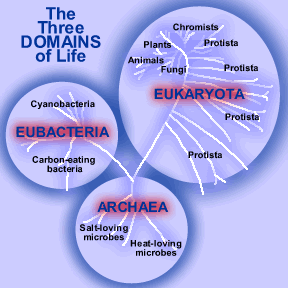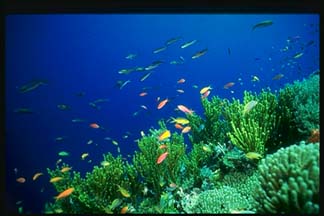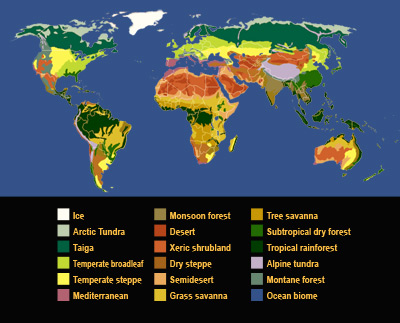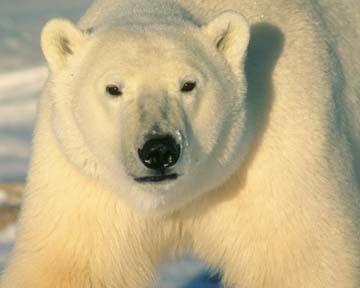Click on image for full size
Windows to the Universe original image
Classification of Living Things
Scientists have found and described almost two million species on Earth. Plus, new species are being discovered every day. That's a lot of species! How do we make sense of it all?
Scientists put similar species into groups so that those millions of species do not seem so overwhelming. If you know what the groups are like, you can figure out what different species are like. For instance, let's say that a friend of yours tells you that he saw an egret last weekend. You have never heard of an egret before, but if he tells you that an egret is a type of bird, you should have some idea of what it is like.
Living things are divided into three large groups:
- Archaea: very ancient prokaryotic microbes.
- Eubacteria: More advanced prokaryotic microbes.
- Eukaryota: All life forms with eukaryotic cells including plants and animals
These three groups are called domains. The drawing at the left shows the three domains of life. The distance between groups indicates how closely related they are. Groups that are close together, like plants and animals, are much more closely related than groups that are far apart, like plants and bacteria!
The Eukaryota domain is divided into several groups called kingdoms.
- Kingdom Protista – Organisms with just one eukaryotic cell
- Kingdom Fungi – Including mushrooms and other fungus
- Kingdom Plantae – Including trees, grass and flowers
- Kingdom Animalia – From snails to birds to mammals like you!















